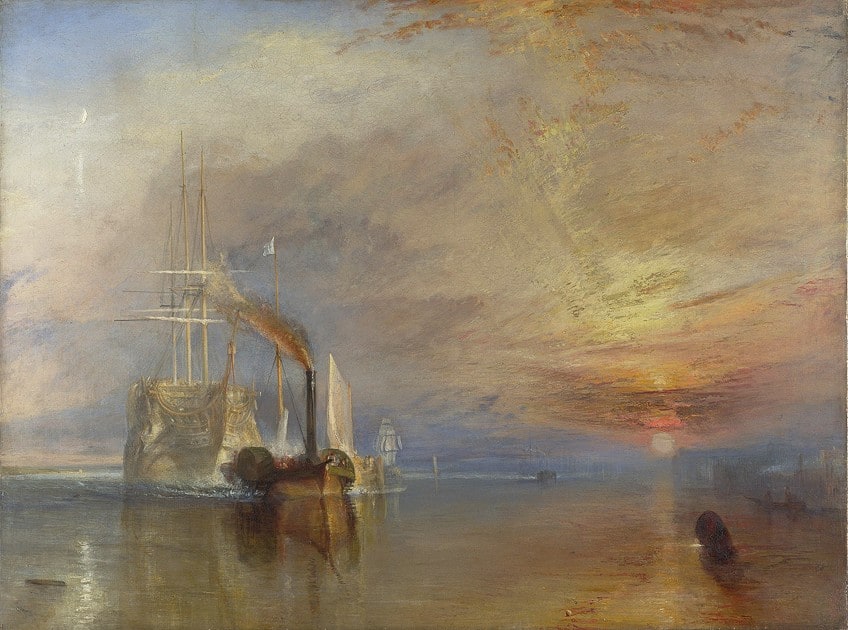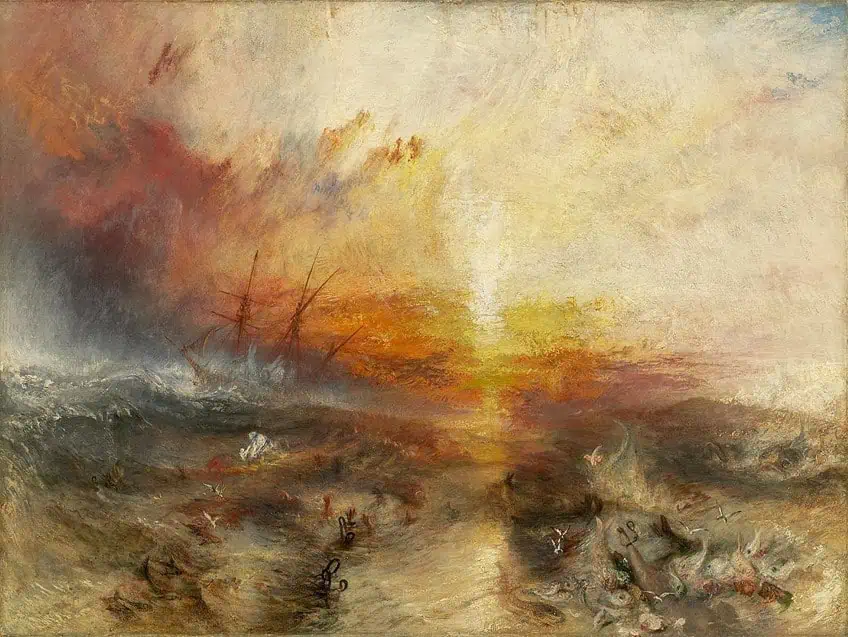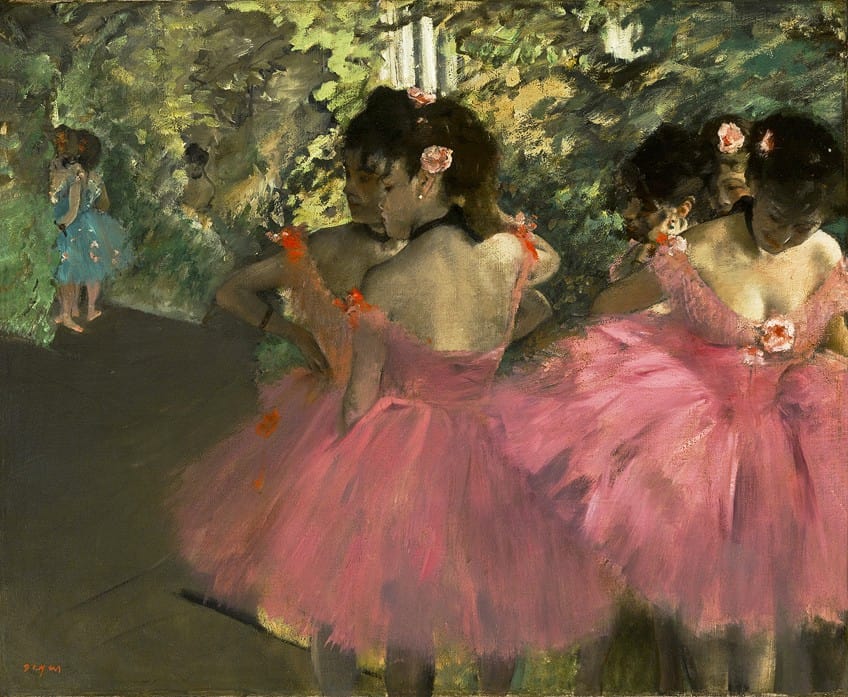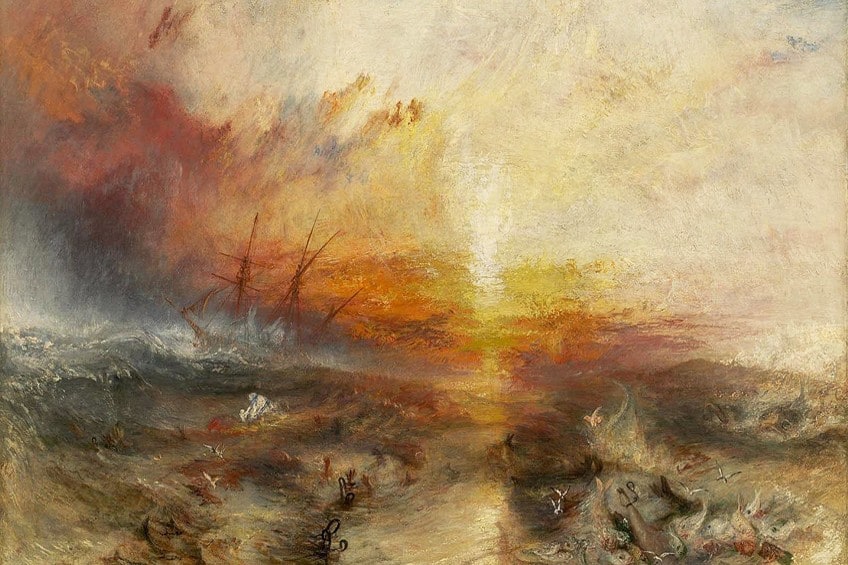Scumbling – Discover the Dry Brush Painting Technique
What is scumbling in art and how is it used? Scumbling in art is one of the dry brush painting techniques. The scumbling technique involves adding a thin paint layer over a previously painted layer using a dry brush and loose hand movements. Let us find out how to add scumbled paint to your own artwork.
What Is Scumbling in Art?
By applying the scumbling technique, a layer of fragmented, scattered, or scratched color is applied over another color, allowing parts of the lower color layers to show through. As a result, an area of the piece gains depth and variety of color. The scumbling technique can be executed with opaque or transparent colors, however, the effect is stronger with semi-opaque or opaque colors and with a light color over a dark one. If necessary, you can brighten a color using titanium white before using it for scumbling. This will also help you make the color more opaque.
The scumbled paint colors blend visually when viewed from a distance. The texture and brushwork in the scumbled paint layer can be seen up close.

Learning How to Use the Scumbling Technique
You can add scumbled paint using a brush or scrunched-up cloth. If you’ve ever attempted decorative paint effects before, you might think of it as a small-scale version of sponge-painting a wall. Scumbling is one of the dry brush painting techniques that artists often use to create exciting depth and textures in their works. The trick is to use a piece of cloth or dry brush and a small amount of paint. Instead of starting with too much paint, it is far easier to go over the spot again. Dip your paintbrush into some paint, then wipe it on a towel to remove the majority of it.
When using the paintbrush on the canvas, it works best if the paint is firm as opposed to runny as it doesn’t spread as quickly. Instead of absorbing moisture from the watery paint, try to keep the paintbrush hairs reasonably dry.

If the hairs on your paintbrush are very wet, wrap a towel over the ferrule end instead of the tip. This will aid in eliminating moisture from the brush without losing too much pigment. You can picture the method as scrubbing the remaining bit of paint from the paintbrush onto the canvas, leaving only color fragments. If you like to be more engaged, imagine scrubbing an artwork with a dirty brush. You’re focusing on the painting’s very top surface, the tips of the canvas fibers. Use your least favorite brushes for scumbling because you will be scraping and will most likely apply pressure on the brush, flattening the hairs at some point.
Get an inexpensive, stiff-hair brush, or go with an old one. Move your paintbrush in a back-and-forth or circular motion.
Scumbling Issues and How to Avoid Them
The scumbling technique isn’t too difficult to pick up, but it does require some practice to accomplish confidently. The two most crucial points to keep in mind are to add scumbled paint onto dried paint with very little color on the brush. When you try to scumble with a brush that has too much paint on it or is too saturated, the color will spread.
The small spaces on the surface will be filled in, resulting in a uniform, consistent region of color, which is not your intention when scumbling. To avoid this issue, have a clean cloth on hand to wipe away any excess paint.

You can also achieve some wonderful effects this way. When you scumble onto a wet layer of paint, the colors combine and spoil the impression. Scumbling is best applied on paint that is completely dry, so rather wait if in doubt. Working on dried paint also allows you to take it off with a towel if you aren’t happy with the effect or accidentally applied too much paint.
But, if you are applying the scumbling technique with acrylic paint, you will need to act fast!
The Best Use of the Scumbling Technique
Scumbling may be an effective technique in a variety of artworks, based on the desired result. Scumbling may be employed to produce delicate gradations of tone and color in an artwork, which will provide it with the impression of depth. A scumbled paint layer of blue over a dry layer of green, for instance, might give the impression of a mountain range as viewed from a distance.
The scumbling technique can be used to reduce rough edges in an artwork, rendering color or shape transitions more natural and organic.
The scumbling technique can be utilized to give an artwork a misty, dreamy, or ephemeral aspect. This technique is especially efficient in landscapes, in which it can be applied to represent misty hills or the light of a sunset. By enabling the textures of the underlying layer to break through, it can additionally be used to generate fascinating textures in an artwork. A scumbled paint layer over a dried coat of impasto, for instance, can provide a beautifully textured surface.

The 19th-century English artist J.M.W. Turner is widely regarded as the father of scumbling. His ethereal landscapes are distinguished by a delicate interplay of color and light, which he produced by layering semi-opaque glazes and scumbled paint layers. Rembrandt was a famous Dutch artist who utilized the scumbling technique to create depth and mood in his portraiture and genre pieces. He frequently used semi-transparent layers of paint over a monochrome undercoat to enable the tonal changes to shine through.
Scumbling was utilized by Edgar Degas in his impressionistic images of ballerinas and life in Paris to convey an impression of motion and emotion.
He typically used loose, expressive brushstrokes to apply layers of paint, enabling the textures and hues of the previous layers to shine through. In Claude Monet’s landscapes and seascapes, he applied scumbling to create a feeling of ambiance and light, layering translucent pigment to portray the shifting effects of weather and sunlight.
As we have discovered today, scumbling is one of the effective dry brush painting techniques that you can apply to make your artwork more textured and rich in layers and color. Many famous artists have used it throughout art history to add interest and feeling to their works. If you are looking for a way to make your paintings feel more atmospheric, dreamy, and detailed, then try out the scumbling technique!
Frequently Asked Questions
What Is Scumbling in Art Used For?
Scumbling is a dry brush painting technique that involves adding paint with a dry brush over an existing coat. It’s similar to adding a layer of medium to the last coat of paint and then starting to blend it in afterward to make the appearance of the paint softer. If you need a frame of reference, the effect is similar to some of J.M.W. Turner’s seascapes.
When Should I Use the Scumbling Technique?
Scumbling is a quick approach to adding texture to a flat surface and is usually applied to add interesting textures to your painting. Scumbling is also beneficial since it eliminates the necessity to spend a lot of time mixing paint colors together. You may use colors directly from the tube and still obtain decent results. Scumbling also allows you to loosen up your painting, making it look more spontaneous and loose, rather than having a rigidly defined form, line, and color.
Megan is a writer and researcher who holds a degree in Social Sciences, with a specialization in Psychology and Environmental Science, from the University of Cape Town. Her dedication to acquiring knowledge and making a positive impact has driven her current work in promoting conscious and sustainable growth in Southern Africa. Megan’s interests encompass exploring the physical and psychological impacts of color in our environment on our mood and well-being. She is also passionate about the role of art and creativity, which has been an integral part of society since the beginning of human history. Since 2022, Megan has been contributing blog posts on painting and color theory at artfilemagazine.
Learn more about Megan van Schoor and about us.
Cite this Article
Megan, van Schoor, “Scumbling – Discover the Dry Brush Painting Technique.” artfilemagazine – Your Online Art Source. April 28, 2023. URL: https://artfilemagazine.com/scumbling/
van Schoor, M. (2023, 28 April). Scumbling – Discover the Dry Brush Painting Technique. artfilemagazine – Your Online Art Source. https://artfilemagazine.com/scumbling/
van Schoor, Megan. “Scumbling – Discover the Dry Brush Painting Technique.” artfilemagazine – Your Online Art Source, April 28, 2023. https://artfilemagazine.com/scumbling/.



